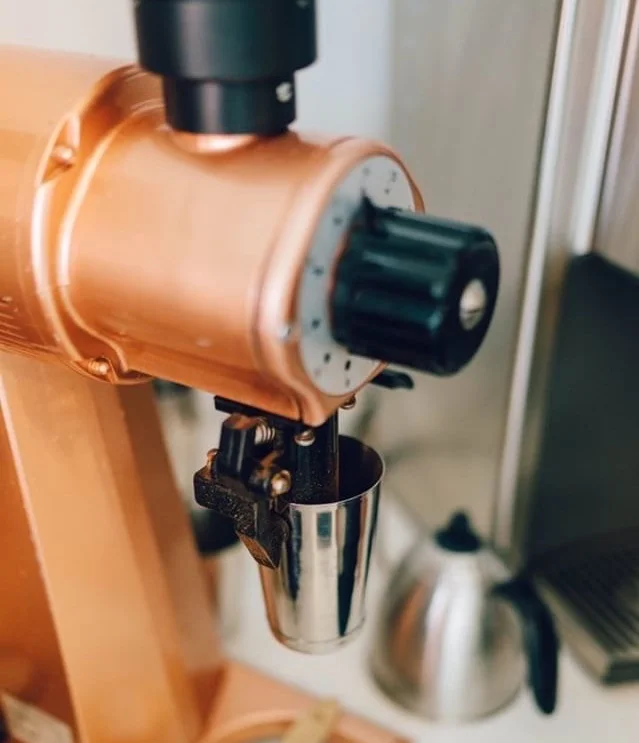Using Extraction Levels To Rate Grinders
EK Grinder | Photo Courtesy of @andrewrizer
One thing notably absent from most marketing and discussion of grinders is mention of extraction level. Manufacturers routinely reveal burr size, lbs or kg per hour, motor RPM, etc, but rarely mention extraction data. It would be a great service if the SCA or some other hypothetically impartial body would test and rate grinders and other coffee gear using objective metrics. In the case of grinders, the most important metric would be extraction level. (I know that grinders don’t do the extracting.)
Given that roast development affects extraction data, there probably cannot be a standardized, objective number (eg this grinder extracts a certain recipe at 20%). But it wouldn’t be impossible to use extraction data to compare grinders. For example, one could test the relative extraction levels numerous grinders yield using beans from the same roast batch.
A few facts about grinders, extraction, and coffee flavor:
Higher extractions are almost always better. For a given brew recipe and grinder, the highest extraction is not necessarily the best. For example, many of us have had the experience of setting the grind one small notch finer and having flavor deteriorate despite a marginally higher extraction level than that produced by the coarser setting. However, if you measure and taste hundreds of batches of a particular brewing method, the best brews would likely cluster around the highest extraction levels.
A technique that produces higher extractions for a particular brewing method will usually yield better results than will lower-yielding techniques. For instance, if you improve your puck prep to decrease channeling during espresso extraction, flavor improves and extractions increase.
If two grinders yield different average extraction levels for a given set of brewing parameters, the grinder that yields the higher extractions will almost always produce the tastier coffee.
As a grinder’s burrs dull with use, extraction levels will decrease.
Improving burr alignment will increase average extraction yield.**
**A top-notch grinder with poor alignment may produce higher extractions but inferior flavor compared to a mediocre grinder with excellent alignment. Many of us have had this experience with high-extraction, gushing, channeled espresso shots from an EK. A perfectly aligned EK can yield magical espresso, but few of us have had that experience.
You may not personally be a big fan of measuring extractions, but measurement offers many benefits, not the least of which is offering some objective data on which to base discussions and comparisons. Measurement led us out of the dark age of ristretto madness, measurement helped me to discover the value of the EK grinder (something about which even Mahlkonig was unaware), and measurement can help to evaluate puck-prep methods, burr sharpness, burr alignment, and of course, repeatability of results. Extraction measurement is a tool, not a dogma. Measurements offer valuable data, which you can use as you wish.
There are two important reasons to consider extraction levels when choosing a grinder:
A grinder that produces higher extraction levels will generally yield better-tasting coffee.
Higher extraction levels allow you to use less ground coffee to achieve the same brew strength and weight.
For example, let’s say you use an espresso grinder that typically yields 19% extractions and 9.5% TDS using 20g of grounds to pull 40g shots. If you then switch to a grinder that produces 22% extractions, you can then produce 40g shots with 9.5% TDS by using only 17.3g of grounds. (Please note these numbers are a little imprecise, but I’d rather not address here.) Decreasing the dose by 2.7 g per shot would add up to an annual savings of over 400 lbs (190 kg) per year for a café that pulls 200 shots per day. That means spending, say, an additional $1000 USD for a higher-yielding grinder may yield an annual return of $4000, assuming you are paying $10 per lb ($22 per kg) for beans.
The bottom line: better grind quality produces higher extractions, which result in tastier coffee and cost savings.
Please leave a comment below. I’d like to hear from you.
About the Author
Scott Rao is an industry veteran and author of several best-selling coffee books: The Professional Barista’s Handbook, Everything but Espresso, and The Coffee Roaster’s Companion.






